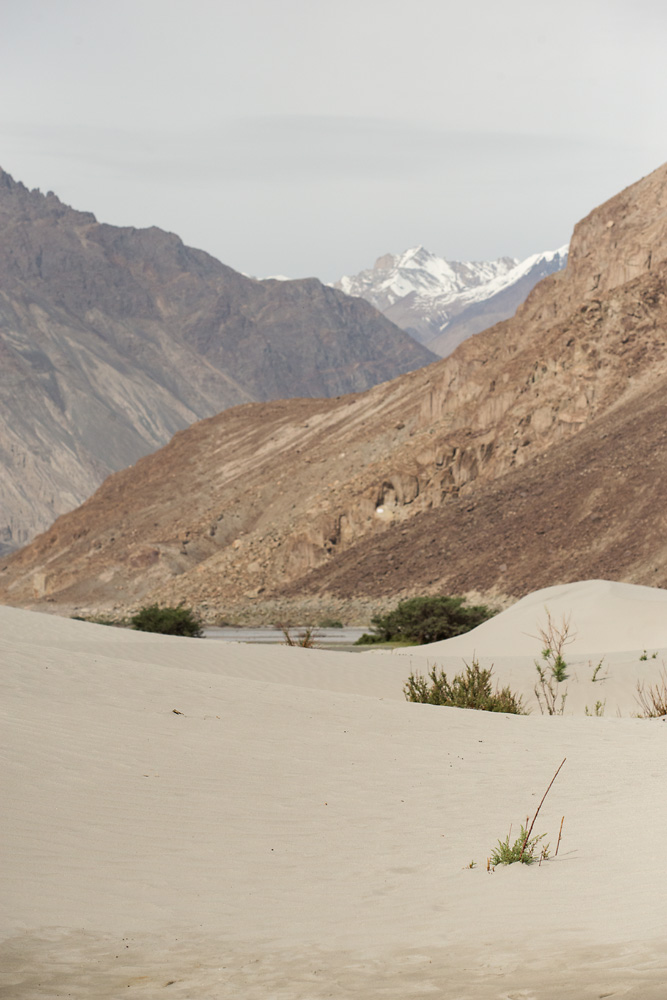Where in India would you find these?
Thinking of the deserts of Rajasthan? Well, there’s another desert of a very different kind in India. Here’s another clue.
It’s, of course, the high altitude desert of Ladakh. A different sight, of course, from the turquoise blue lakes and mountain landscapes. Welcome to Nubra Valley!
It was on a cloudy day that I first drove into Nubra Valley. After a breath-taking (literally and metaphorically) ride over the mighty Khardung-La, the river Shyok meandering through the rather narrow valley presented a beautiful sight to soothe the nerves. The multi-coloured mountains all around were textured brilliantly. How had I missed this place on all my earlier trips to Ladakh?
The river is a constant companion by the road – sometimes visible and disappearing at other times behind rocks, shrubs and sand dunes. Soon enough, the first stretch of sand dunes greets you.
By the village of Hunder lie the most famous of the dunes. Surprising as it might sound, water and wind in the narrow valley have most likely conspired in eroding the rocks to create these dunes over many many centuries.
Here, one can also see the domesticated version of the Bactrian Camel, a remnant of the once-thriving Silk Route that passed through the valley. These camels now carry a different burden – tourists from all over the world.

A Bactrian Camel grazes on the sparse vegetation on the sand dunes, with the Diskit Monastery in the background
The nearby village of Diskit, also the area headquarters, has the oldest and grandest gompa (Buddhist monastery) in the region. Founded in the 14th century, the gompa overlooks the valley from the steep hill it is built on. A new addition to the monastery is a huge 32 metre (106 foot) statue of Maitreya Buddha. It is visible from as far as Hunder and beyond.
Of course, it is not just vast earthy landscapes. Sometimes a dash of colour also greets us at Nubra Valley.
And the occasional Hare makes a brief appearance, only to vanish into the undergrowth.
Having descended from an altitude of over 17,500 feet to an average altitude of around 10,000 feet, Nubra Valley is a great place to acclimatize to the high altitudes of Ladakh. The village of Kyagar, with its lush greenery and warm people, is a great place to relax away from the activity at Hunder.
Nearby Sumur village also has vast stretches of sand dunes, just in case you’ve not photographed them to your heart’s content in Hunder.
How to reach Nubra Valley:
Diskit (the main town in Nubra Valley) is around 150km from Leh by road. The road climbs from Leh (around 11562 feet altitude over MSL) to the famous Khardung-La (17,582 feet) and then descends into the Nubra Valley (averaging 11000 feet). The journey takes around 4 hours, excluding any stops along the way.
Inner Line Permits are no longer required for Indian Nationals traveling here. Foreign Nationals would need to apply for a Protected Area Permit in Leh in groups of 2 or more through a registered travel agent.
Darter Photography conducts Mountains and Monasteries – A Photography Tour of Ladakh (the next trips happening in June-July 2015) to various places around Ladakh. We visit Nubra Valley on this tour, with the team spending 2 nights exploring the place.
















